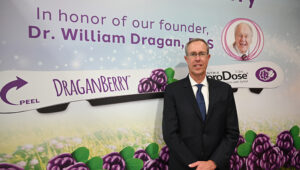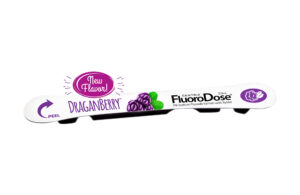Middle Aged Doesn’t Mean Low Risk – Prevention for Life Includes Everybody!

We often assume that middle-aged patients fall in the safe category – unlike younger patients, they are mature and have the life experience to make good health decisions; however, unlike senior patients, they don’t yet have the advanced health problems detrimental to oral health. But, the assumption that this age group is safe from risk is false. Risk factors for the middle-aged include root exposure, drug- or disease-induced xerostomia, multisurface and interproximal restorations, reduced or lack of fluoridated water consumption (because they drink bottled water) and recent decay. They might also be undergoing radiation or chemotherapy or have addiction problems. In a lot of ways, middle-aged adults need more attention and preventive care than younger patients.
Amy Porto, RDH, CDA, describes how to look after middle-aged patients to ensure the best outcome given this age group’s unique circumstances.
Studies show that approximately half of US adults experience tooth sensitivity.1 Ninety-two percent of US adults ages 20 to 64 have had dental caries in their permanent teeth.2 29.5% of adults 19 to 64 have untreated caries – a 15% increase in just 10 years.3 More than four million people in the US wear braces – 75% of those people are under age 18 with the remaining 25% being adults.4
The long-term benefits with fluoride varnish treatment for sensitive teeth or dental decay cannot be denied. So why do we struggle convincing our adult population that they need fluoride varnish treatment?
The challenge – Influence your patient while they are in your chair no matter what procedure is being performed! From cleaning to root canal, to tooth restoration, you have been given the chance to influence your adult patients and help them understand and comprehend the benefit of a fluoride varnish treatment. While they are in your chair, evaluate each patient for risk factors by using the CAMBRA forms and note risks such as root exposure, drug or disease induced xerostomia, multisurface and interproximal restorations, reduced or lack of fluoridated water consumption and/or recent decay. For example, patients who require medications are prone to dry mouth. Are they aware of the harmful effects over time? While they are in the chair – that’s the time to educate them. Explain that fluoride varnish delivers protection against these types of risks.
If 92% of US adults, ages 20 to 64, have had dental decay in their permanent teeth2 – consider the number of adults who could benefit from this education and fluoride treatment!
How to start the conversation:
- Have your patient complete the PATIENT SELF ASSESSMENT FORM. This form provides the avenue to start communication on risk factors and prevention needs.
- Confirm their need for treatment by performing a risk assessment (CAMBRA forms) and share those results with your patient.
- Treat with FluoroDose® fluoride varnish now.
- Don’t let insurance run treatment plan — Risk level dictates treatment. Submit codes to insurance to show why treatment was provided:
- Submit application (D1206).
- Submit determined risk (D0602-moderate, D0603-high).
- Submit CAMBRA form showing determined risk factors.
- Schedule recall intervals based on patient risk
- Moderate Risk – Preventive Treatment every 6 months (Per ADA)
- High Risk – Preventive Treatment 3 to 4 months (Per ADA)
Practice Health
For every office, the primary goal is to deliver outstanding health care. It is also necessary that treatment modalities are profitable to adequately support the delivery of great health care. Busy dental offices that recommend fluoride treatments to all of their moderate- to high-risk patients enable both great patient health and great practice health. Fee levels for preventative care that virtually every adult will accept can add hundreds of dollars a day in incremental practice profits. In one year, that can mean a five-figure increase to current revenue.
Learn More on our Caries Prevention website.
- https://www.rdhmag.com/articles/print/volume-24/issue-1/feature/fluoride-varnish-to-the-rescue.html
- https://www.nidcr.nih.gov/research/data-statistics/dental-caries/adults
- http://www.ada.org/~/media/ADA/Science%20and%20Research/Files/HPIgraphic_0916_3.pdf?la=en
- http://doctorly.org/how-to-become-an-orthodontist/
Photo Credit: Image by wayhomestudio on Freepik
Boost Your Expertise with Our Lunch & Learn Programs!
Join our engaging Lunch & Learn sessions and take your dental skills to the next level. Enjoy a meal while learning from experts about evidence-based solutions, caries prevention, restorative procedures, and more. Enhance your practice and patient outcomes with our comprehensive courses.
Share
You Might Also Like...

Centrix President Discusses How the Company Became a Prevention Leader!
Prominent Polish dental magazine, Twój Przegląd Stomatologiczny, interviewed William to get the inside scoop on the interesting history of Centrix and our efforts to make prevention easier.

Introducing the NEW flavor of FluoroDose fluoride varnish … DraganBerry!
In honor of Dr. Dragan’s achievements, Centrix has introduced a magical new flavor of FluoroDose fluoride varnish — DraganBerry.

The Most Minimally Invasive Way to Treat Decay
Did you know that combining silver diamine fluoride (SDF) with the application of glass ionomer can be a long-term solution for restoring a badly decayed tooth to its full strength and glory?


